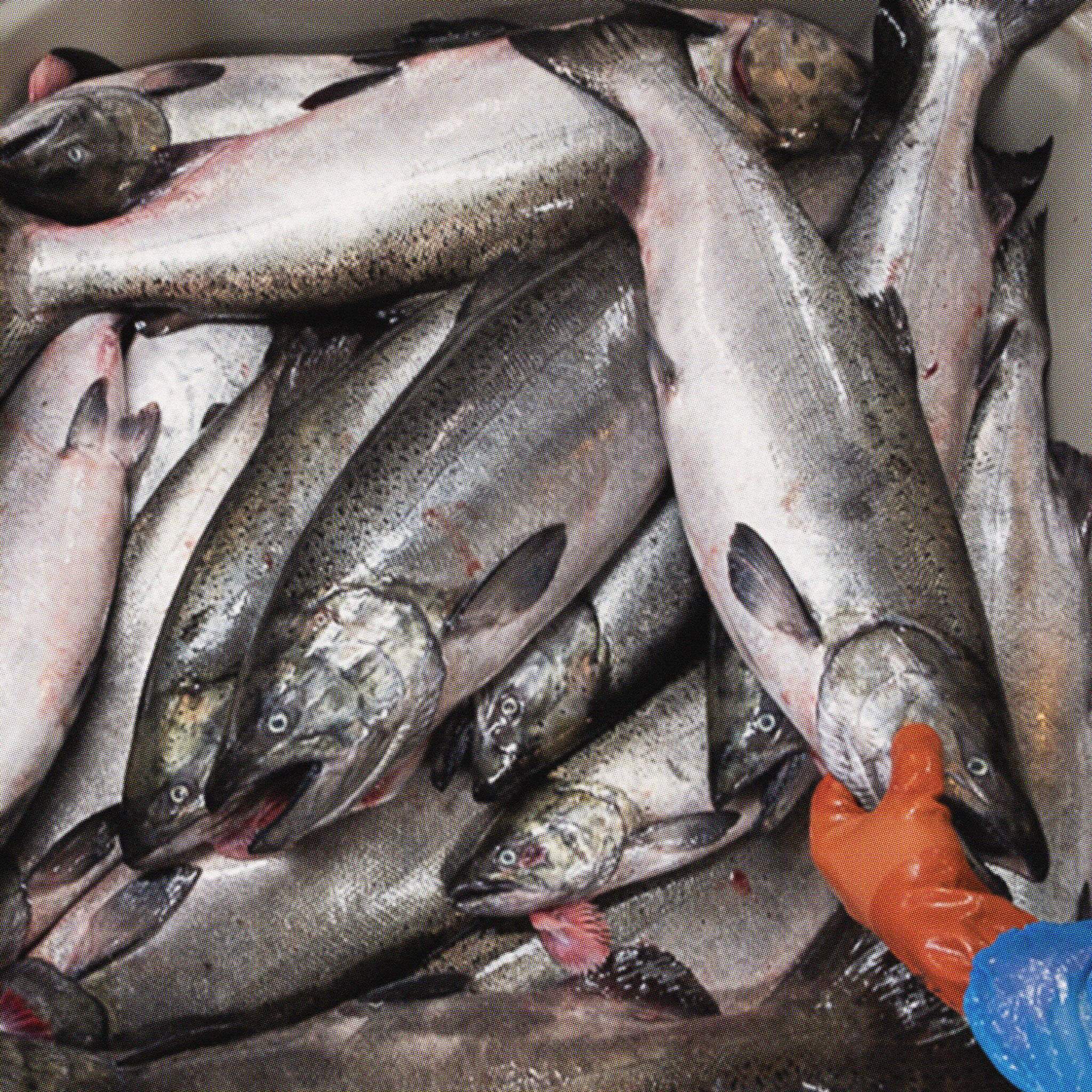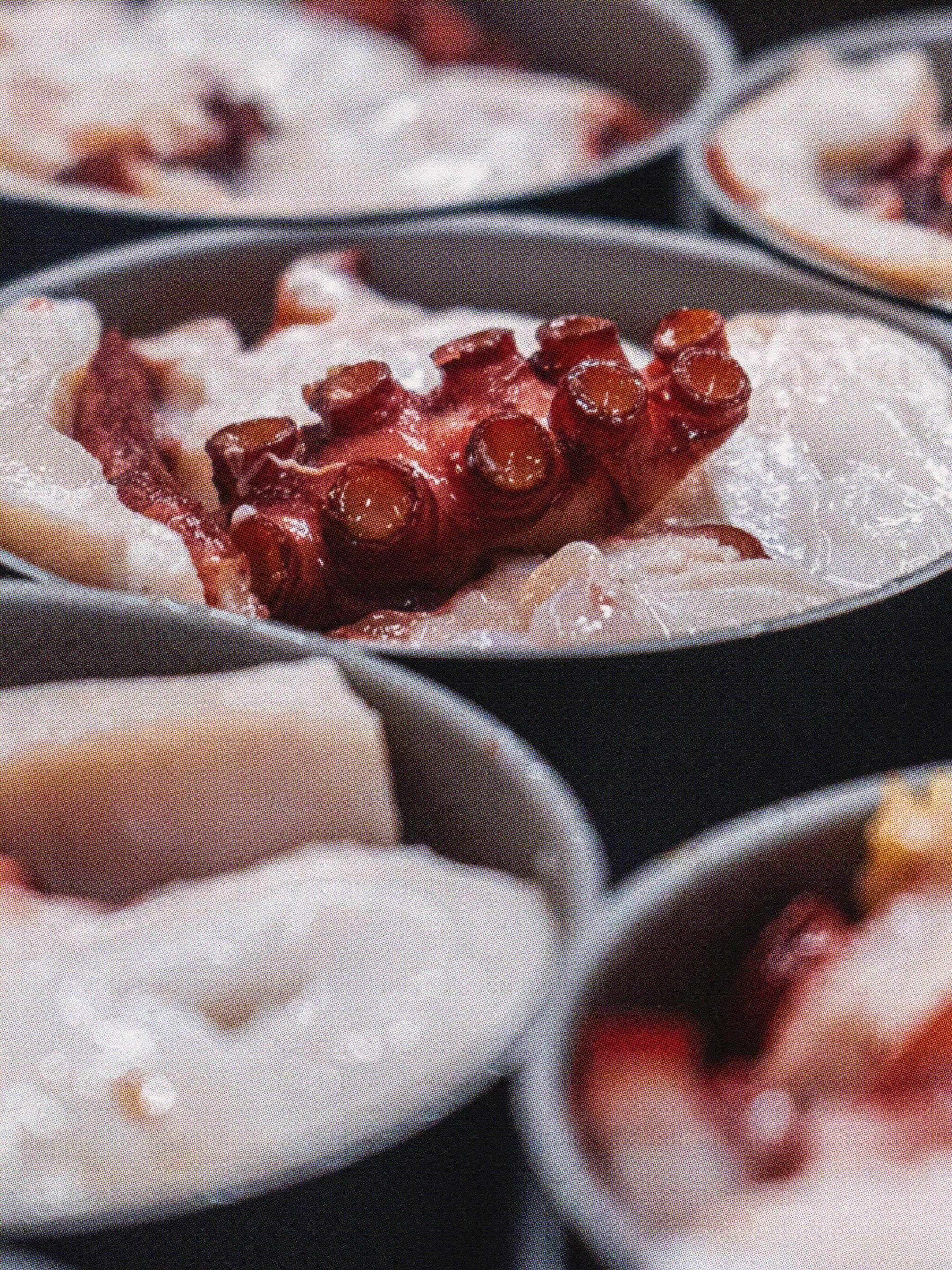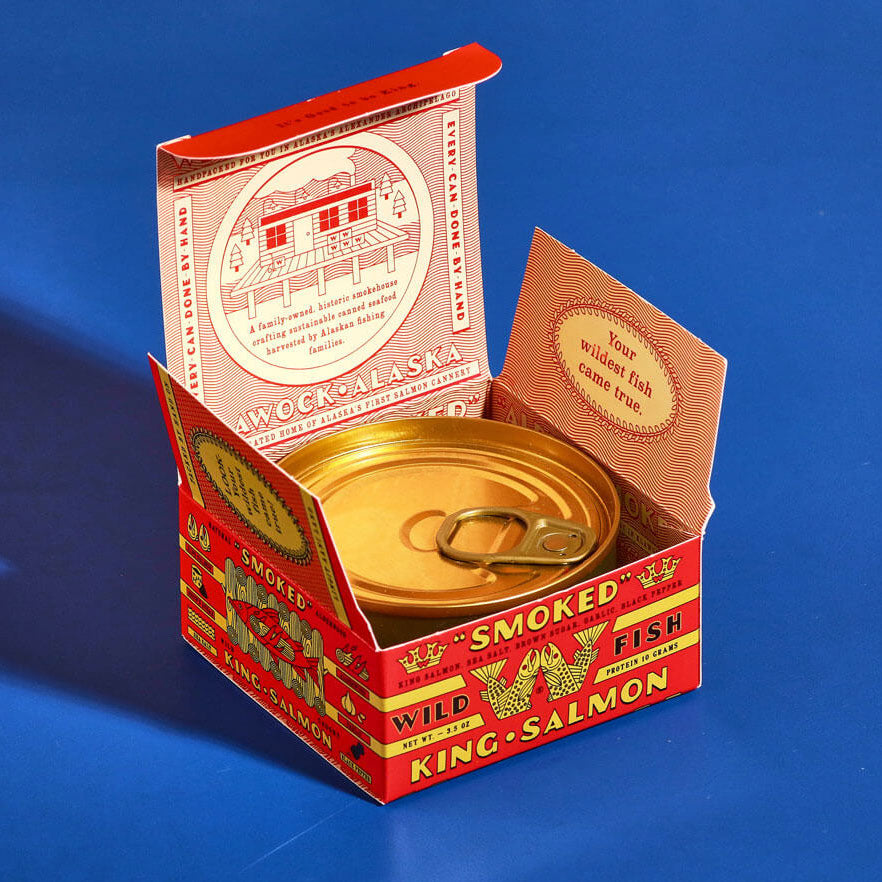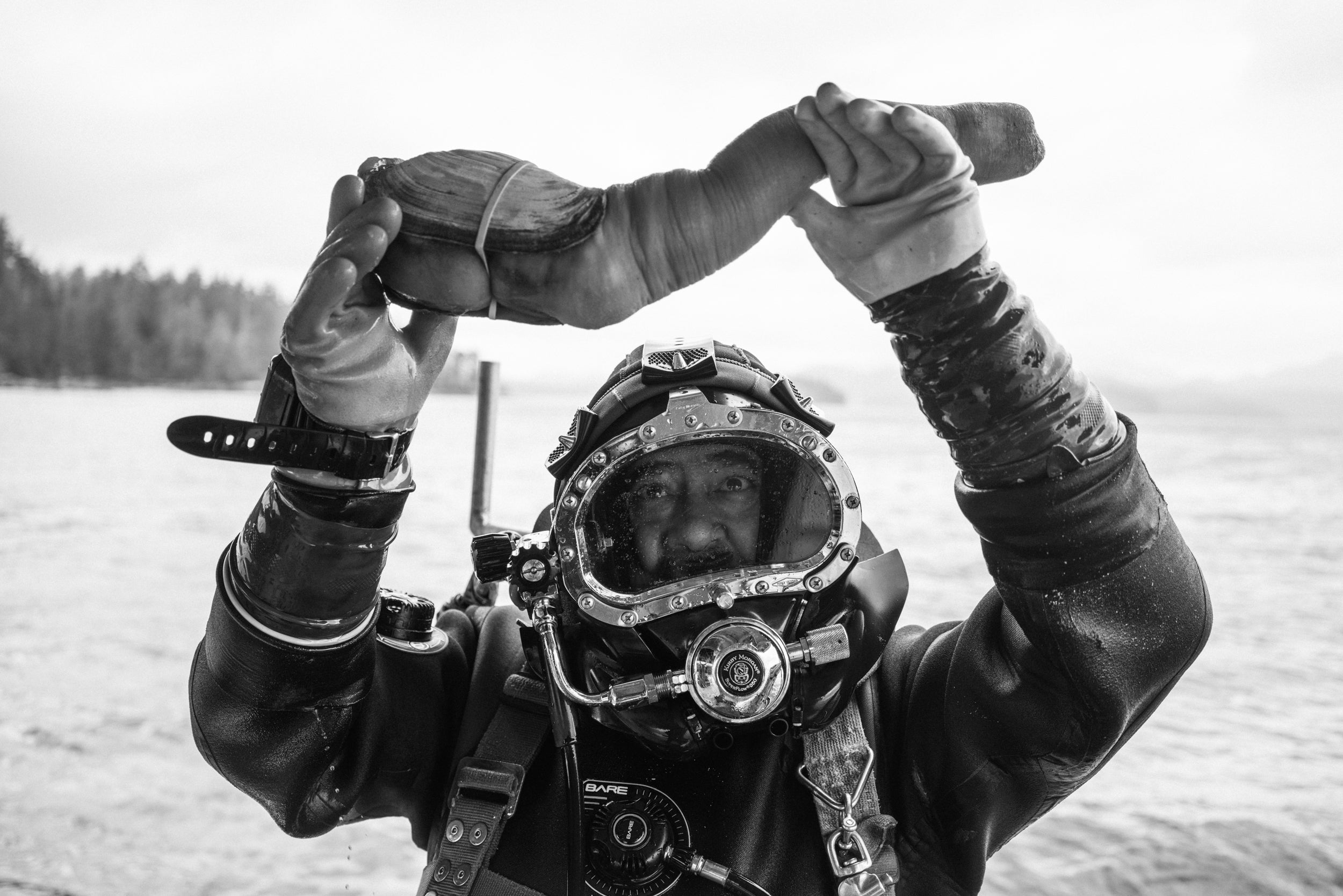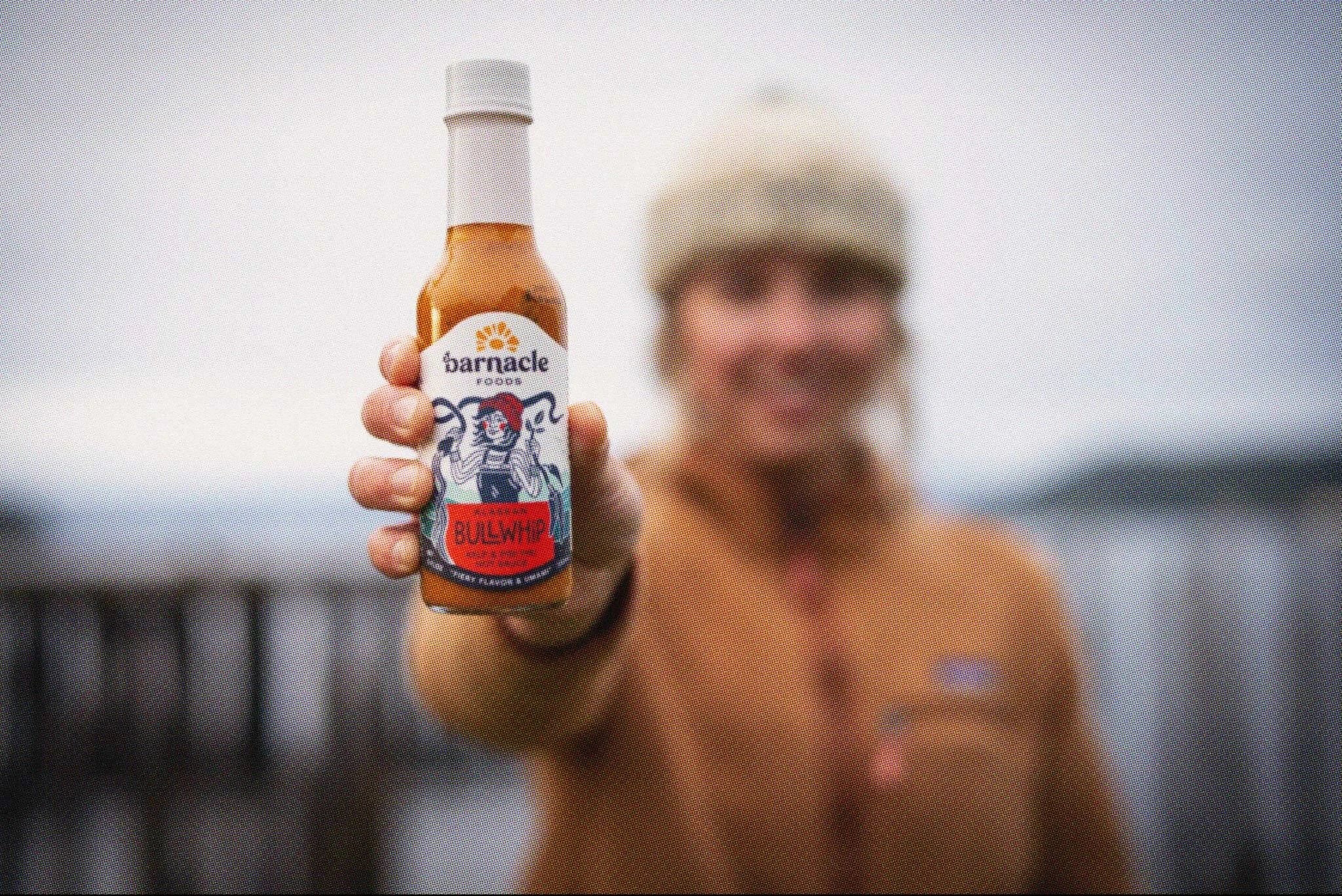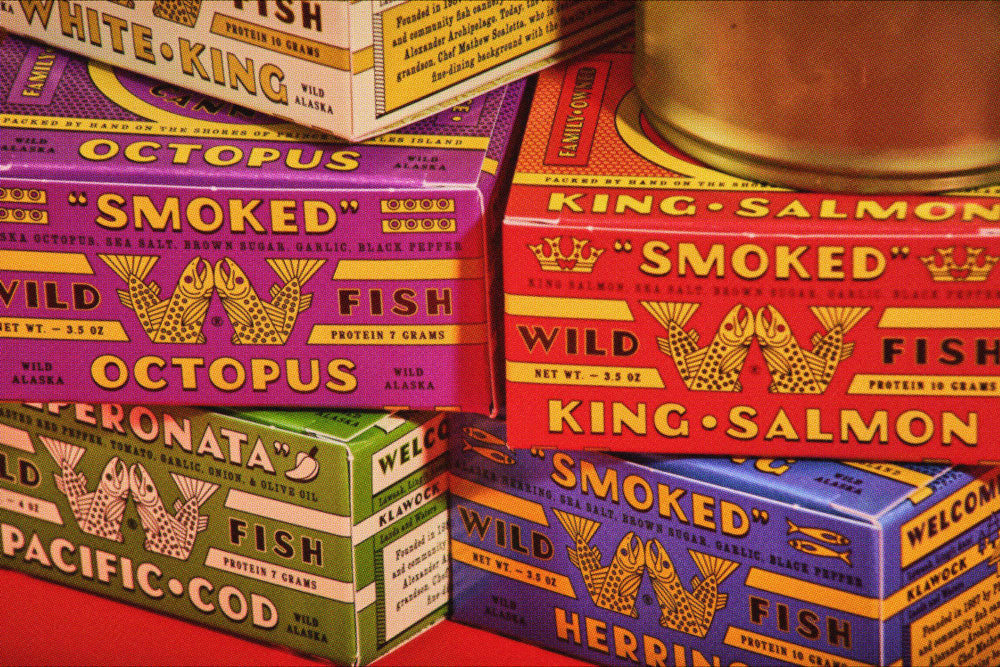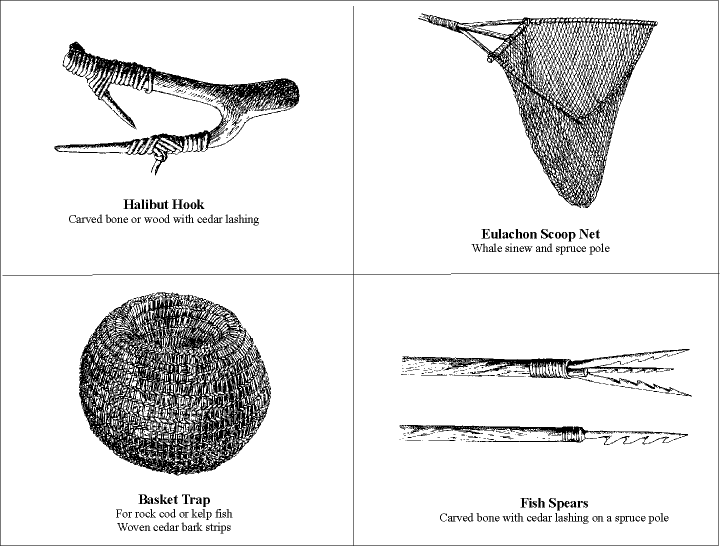

· By Mathew Scaletta
5 Things You Might Not Have Known About Wild Alaska Salmon
Tools of Tlingit fishermen.
All six species of Northern Pacific salmon have been an important food source and bartering tool of Alaskan people since prehistoric times, and they are still of massive regional economic importance today. Even as the commercialization of salmon fishing developed in the 18th and 19th centuries, natives continued to rely upon the annual bounty of the spawn for subsistence and trade. The economic importance of wild salmon fishing in Alaska stretches to the Northwestern states of Washington, Oregon, and California, fueling a cascading list of industries and cultural phenomena. Wild salmon is extremely important to the economic health of the Northwest, and to the United States as a whole, but those of you who enjoy wild caught salmon in the Lower 48 states have probably missed out on a few facts...
1. All Pacific Salmon Die After Spawning

This early autumn specimen seems to be at the end of his rope. We thank him for feeding the ecosystem and wish well upon his descendants. Thanks also to Joe Mabel for this photograph.
It’s quite sad, but it’s true. Young Pacific salmon fry spend their early lives in the rivers where they were spawned, then swim out to sea where they mature and gain body mass from a diet rich in sea plankton and krill. When they’ve matured, they swim with amazing precision back to the river beds where they hatched. The females lay an average of 2500 eggs, which the males then fertilize. Once this has taken place they die - with great flopping pathos, we should add - thus completing the cycle of life with poetic exactitude. Atlantic salmon live out the same ritual, generation after generation, but a small percentage of them live on after spawning each year.
2. Alaska Has Been a Fertile Fishing Ground for More Than 10,000 Years
Actually, it’s been much longer than 10,000 years if you count the non-human inhabitants (and we do count them). Here on Prince of Wales Island alone, in the most Southeastern corner of Alaska, the Haida and Tlingit people have fished the sea and rivers since before the written word. We are simultaneously proud and humbled to be part of this heritage of wild ecology, and we promise to write in excruciating length on the subject in the future.
3. Wild Salmon Are Highly Susceptible To The Diseases of Farmed Salmon
We'll show you plenty of pictures of fish who no longer live, but we can't stand the sight of sick, suffering fish. By now most of you have probably seen a documentary detailing the sad, unhealthy living conditions of farmed chickens, pigs and cows. These animals typically live in cramped quarters, unable to escape their own excrement, and vulnerable in great numbers to the diseases of a few. The revulsion you should feel toward this dirty fact of farmed meat production applies to farmed fish as well, and since water covers most of the planet and is a highly effective medium for disease transmission, aquatic diseases are especially virulent. Wild salmon who conduct their daily errands in proximity to salmon farms have shown higher incidences of sea lice and tender flesh syndrome, both devastating ailments. When a salmon farm’s fish pens break - and they do routinely break - infected farm fish mix with the wild population and spread disease. It doesn’t seem fair, does it? We want to eat healthy, wild fish for generations to come. And so do the bears. But...
4. Bears Don’t Eat The Whole Salmon, And That's OK

Look at these handsome sons of guns, enacting their primordial summer ritual. Photo by the talented Dmitry Azovtsev.
It’s not because they’re wasteful. During the summer salmon runs, there is so much fish available to Alaskan bears that they need to be picky about the calories they consume to bulk up for the scarcity of winter. That’s why bears will often eat only the concentrated calories available in the brains, eggs and skin of spawning salmon. These parts of the fish offer the greatest amount of high-quality, calorie-rich nutrition for our friends, the bears. The meat that gets left behind becomes food for scavenging species, or for the Earth, which in turn nourishes many species. Think about it: There’s a 16-ounce porterhouse steak and an 8-ounce baked potato on your plate. You can only eat 16 ounces of food at a time, and you know you won’t eat again for a while. How would you navigate this quandary? You’d navigate it like a bear if you were in your right mind, eating the steak and leaving the fast-burning potato calories behind for the neighborhood opossum. Bears are expert fishermen and energy economists. We thank our furry, dangerous friends for the service they provide the ecosystem (and opossums).
5. Wild Salmon Is Higher In Minerals Than Farmed Salmon
Fish farmers are able to control the diets of their fish, often relying on highly processed feed derived from dubious commercial sources. Farmed fish is often, indeed, fattier than wild salmon, and therefore sometimes higher in beneficial omega-3 and omega-6 fatty acids, but due to the varied natural diet of fish living and swimming freely in the open sea, wild salmon are higher in minerals like potassium, zinc and iron. Wild salmon also will not destroy the balance of Nature, which is a thing you rely upon for your own survival. Rather, wild salmon enhance the ecosystem with the simple elegance of their life cycle, providing food and livelihood for American people families, bear families, and opossum families. And let's not kid ourselves, they just taste better!
